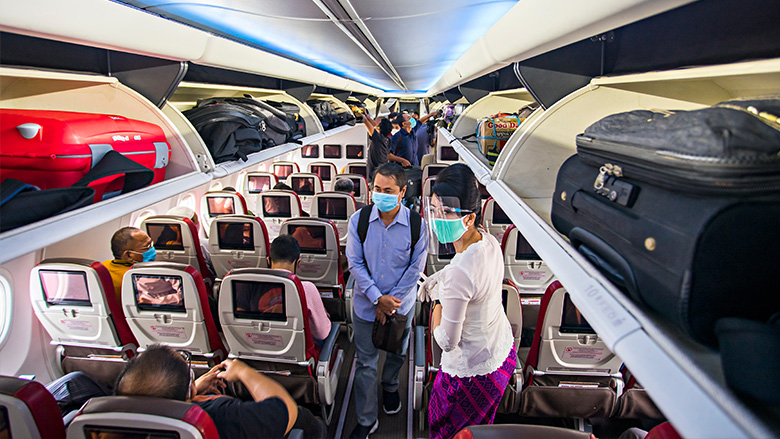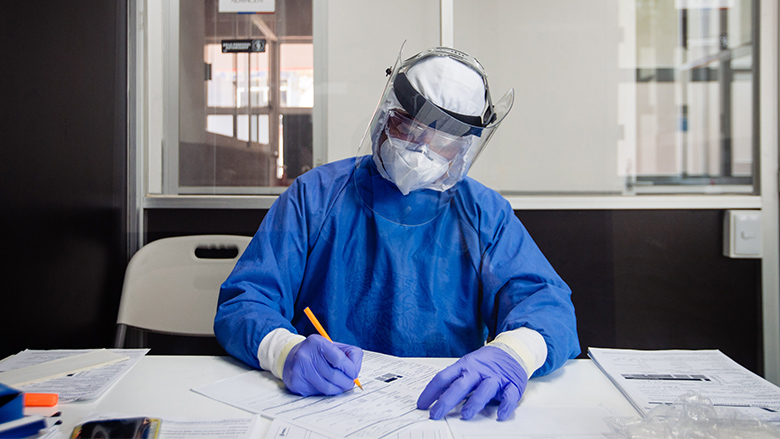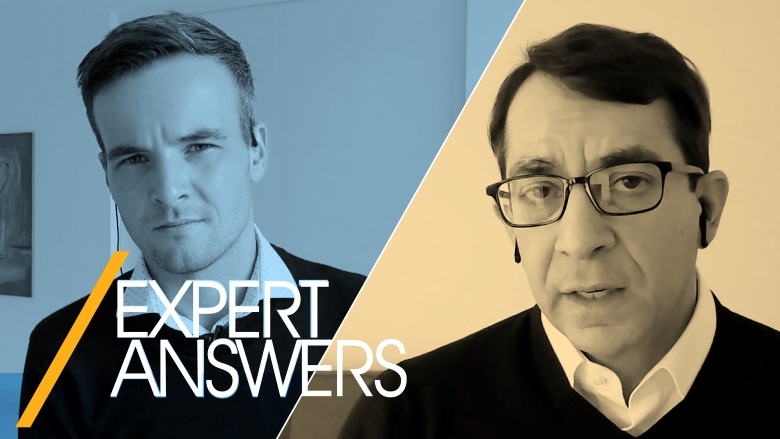Nevertheless, as the January 2021 Global Economic Prospects reports, that recovery is expected to be subdued. Not only will it leave global output well below pre-pandemic levels, but even that modest rebound could be derailed by a number of risks, including interruptions in the deployment of a vaccine or turbulence stirred by the mountain of debt accumulated by many emerging market and developing economies.
To guide and nurture this fragile return to economic and public health, it will be vital to contain the pandemic and pursue a rapid and widespread distribution of vaccines, notwithstanding logistical impediments in many developing countries. Although support for businesses and households will need to continue, it will be constrained by limited fiscal and monetary policy space.
Crawling Back
The numbers are sobering and the challenge is daunting.
, exceeded only by ones linked to the two World Wars and the Great Depression. The recovery this year assumes that control measures reduce infection rates and that the vaccination process gathers pace so that vaccine coverage is widespread around the world by the end of next year.
Output in emerging market and developing economies as a group is expected to expand 5% this year, but this follows an economic blow that erased at least 10 years of per capita income gains in more than a quarter of the countries in this group. Much of the increase in GDP this year will be due to China. Excluding China, emerging market and developing economies are forecast to grow at a more muted pace of 3.4% in 2021, as many countries continue to struggle with virus outbreaks.
Despite renewed growth, this is well below the pre-pandemic pace. Further, per capita incomes are projected to be lower in the majority of these countries—an indication of the poverty reduction setback dealt by the pandemic. Logistical impediments in vaccine distribution, which may delay the vaccination process for up to a year relative to advanced economies, are likely to represent a substantial headwind to activity.
Uncertainty and Risk
In spite of the prognosis for growth if all goes reasonably well, the outlook remains highly uncertain, and a number of alternative outcomes are possible. A downside scenario in which cases spike early this year, necessitating further restrictions on activity, and in which the vaccination process is delayed, would lead to weaker and more protracted recovery with global growth estimated at a scant 1.6%. Should financial conditions tighten drastically and authorities not be able to contain financial stress and widespread defaults, financial crises could result, potentially leading to another year of decline in incomes around the world.

Among key concerns for the outlook is how the pandemic has further exacerbated debt-related risks that had raised red flags even prior to the COVID-19 shock. Debt can be used to finance growth-enhancing investments. In addition, the pandemic has necessitated large-scale borrowing to finance many critical support measures. However, previous periods of rapid debt accumulation are littered with painful reckonings, and the magnitude and speed of the recent debt buildup raises concerns about debt sustainability. Policymakers will have to balance the unwinding of fiscal support measures and ensuring fiscal sustainability with taking care to avoid premature withdrawal of necessary support measures. Debt relief may in some instances be necessary to enable hard-hit countries support their most vulnerable populations through the crisis.
Even after the recovery gets underway, the global economy is expected to experience a protracted period of below-trend output and substantial income losses. Global potential growth—the rate at which growth can be sustained at full employment and full capacity utilization—was already slowing prior the pandemic. COVID-19 has accelerated this slowdown for the global economy and emerging market and developing economies alike.
Undoing the Damage
A comprehensive policy effort can help reverse some of the longer-term damage of the pandemic. This includes, in particular, measures that have limited fiscal cost such as improving governance and business climates, strengthening the effectiveness of spending on human and physical capital, and fostering economic flexibility. A stretch effort by a large number of countries to increase investment and schooling and narrowing the gap between male and female labor participation rates could all reverse the adverse impacts of the pandemic on potential growth.
An area potentially rich in scope will be to prioritize investment in green infrastructure projects with high economic returns. Fostering the adoption of environmentally sustainable technologies can support stronger growth while also mitigating the effects of climate change.

An additional concern as the world emerges from the shadow of the COVID-19 recession is responding in a way that sows the seeds of future crises. To counter pandemic-induced financial market pressures, some emerging market and developing economy central banks have turned to measures once considered extraordinary—the purchase of assets, usually government bonds—to support economic activity. These programs, in an environment of accommodative monetary policy among advanced economy central banks, appear to have helped stabilize financial markets in many countries.
However, where these programs are perceived to be financing unsustainable fiscal deficits, they may undermine hard-won central bank independence and inflation-fighting credibility. Ensuring that asset purchase programs are consistent with central bank financial stability and inflation objectives will be essential to maintaining that credibility.
Yet it will remain up to policymakers to find the right balance of initiatives to support the nascent recovery, set the stage for sustainable and inclusive growth, and undertake the reforms to reverse, at least in part, the damage done by downturn.
MULTIMEDIA

Expert Answers: Will the Global Economy Recover in 2021?


